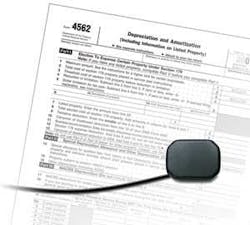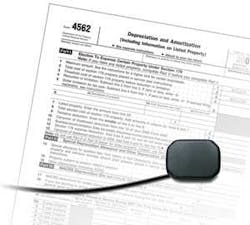A discussion of taxing issues
by Lorin Berland, DDS
For more on this topic, go to www.dentaleconomics.com and search using the following key words: investments, digital radiology, equipment, taxes, technology, Lorin Berland.
Years ago, when questioned about their secrets, women replied, "Only my hairdresser knows for sure." In my dental practice, when people ask how my investments affect the practice's bottom line, I reply, "Only my accountant knows for sure." Joan Goldberg has accounted for my finances for many years, so I asked her to discuss how to invest in the latest and greatest equipment, while making tax time less taxing.
Dr. Berland: What advice can you give about keeping the office at the cutting edge of new technology in a cost-effective way?
Joan Goldberg: Buying equipment should not be considered a burden on the office budget. Dentists don't buy equipment just to save money on their taxes. The primary reason to purchase equipment, such as digital radiology, is to provide better service to the patients; however, this technology does provide direct cost savings, and some tax incentives can offset the expense. Directly, a digital system saves money on consumable purchases such as film, chemicals, and processing equipment. Since digital images are stored on the computer, labor is saved on developing the X-rays, and continually either filing them or looking for them. At tax time, taking the proper deductions makes you feel like you are getting a refund on your investment.
Dr. Berland: What are some of the tax incentives?
Goldberg: By using the Internal Revenue Code's 179 deduction, you can deduct all or part of the cost of certain qualifying property, up to a limit, by deducting it in the year you place it in service. In past years, the limit ranged from $100,000 to $125,000 per year for items such as dental units, digital radiography systems, computers (including off-the-shelf software), furniture, and fixtures. Thanks to the Economic Stimulus Act of 2008, that amount has been increased this year to $250,000 in qualified capital equipment. Besides the basic 179 deduction, the business can also claim first-year bonus depreciation equal to 50% of the cost of most new equipment and software placed in service before Dec. 31 of this year. When using 179, keep in mind that the deduction cannot put you in a net loss, so if you don't have that much in profit, you cannot write off the total amount even though you bought the equipment.
For some, the straight-line depreciation method is more practical. For this, you can take a certain portion of the equipment off of your taxes each year for a certain number of years (usually five years). Accountants calculate the actual number by subtracting the salvage value from the purchase or acquisition price of an asset and dividing that by the total productive years the asset can be reasonably expected to benefit the practice. For straight-line deductions, it's better to buy the equipment earlier in the year. This time constraint does not pertain to 179.
A type of accelerated depreciation is Modified Accelerated Cost Recovery System (MACRS). It was modified in 1986 from the original Accelerated Cost Recovery System established in 1981. This allows for faster depreciation of capital assets toward the beginning of the life of the capital asset so the tax-deductible depreciation expense can be taken sooner, allowing the practice to retain more income early in the depreciation cycle.
Dr. Berland: So, do I have enough to buy more cool equipment?
Goldberg: Sure, if it's the right kind. I remember in the mid 1980s, when you were just starting. You meandered into my office needing help with payroll taxes for your only employee. You were even renting space from another dentist at night and Saturdays. You've come a long way since then.
Dr. Lorin Berland is an internationally acclaimed cosmetic dentist and one of the most published authorities in the professional dental and general media. Dr. Berland, a Fellow of the American Academy of Cosmetic Dentistry, is the cocreator of the Lorin Library Smile Style Guide, www.denturewearers.com, and is the founder of Arts District Dentistry, a multidoctor specialty practice in Dallas that pioneered the concept of spa dentistry. Dr. Berland was honored by the American Academy of Cosmetic Dentistry with the 2008 Outstanding Contribution to the Art and Science of Cosmetic Dentistry Award.

